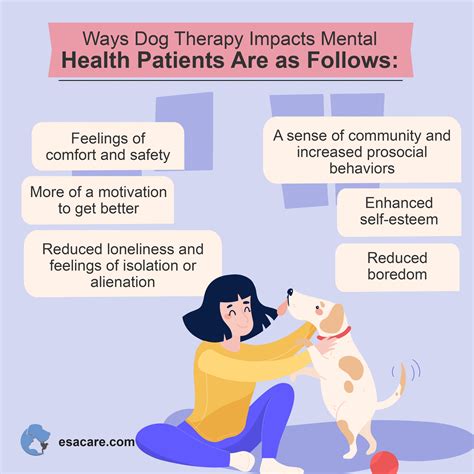Introduction
Pets play an indispensable role in our lives, enriching our days with companionship, unconditional love, and laughter. However, it’s essential to recognize that our furry companions are susceptible to mental health challenges and stress just like humans. In this comprehensive guide, we delve into the critical aspects of pet mental health and stress relief, empowering you with actionable strategies to ensure your pets’ emotional well-being.

Understanding Pet Mental Health
1. Signs and Symptoms of Mental Health Issues
a. Changes in behavior: lethargy, pacing, excessive barking/meowing
b. Physical ailments: digestive problems, skin issues
c. Anxiety: avoidance of certain situations, trembling, panting
d. Depression: loss of interest in activities, reduced appetite
2. Causes of Mental Health Disorders
a. Traumatic events: accidents, abuse, neglect
b. Environmental stressors: loud noises, changes in routine, separation anxiety
c. Medical conditions: pain, hormonal imbalances
d. Genetic predispositions: certain breeds may be more prone to anxiety disorders
Pet Stress Management
1. Identifying Stress Triggers
a. Noise phobias (e.g., fireworks, thunderstorms)
b. Separation anxiety (e.g., leaving the pet alone for extended periods)
c. Social anxiety (e.g., meeting new people or pets)
2. Effective Stress Relief Techniques
a. Exercise: Regular physical activity releases endorphins, promoting relaxation
b. Environmental Enrichment: Providing pets with toys, puzzles, and interactive playthings stimulates their minds and alleviates boredom
c. Training and Obedience: Establishing clear boundaries and expectations reduces uncertainty and anxiety
d. Veterinary Checkups: Ensuring pets’ medical needs are met can eliminate physical discomfort contributing to stress
Transitioning to a Stress-Free Environment
1. Creating a Safe and Calming Space
a. Set up a dedicated “safe zone” with a cozy bed or crate
b. Use calming diffusers or sprays with lavender or chamomile scents
c. Limit exposure to loud noises or overwhelming situations
2. Establishing a Regular Routine
a. Predictable feeding, playtime, and walks provide structure and reduce uncertainty
b. Avoid sudden changes to your pet’s schedule or environment
c. Delegate responsibilities to different family members to ensure consistency
3. Addressing Separation Anxiety
a. Gradually increase separation times to build tolerance
b. Provide interactive toys or treat-dispensing devices to keep pets entertained
c. Consider using anxiety-reducing medications if natural remedies prove insufficient
Empowering Pet Owners
1. Recognizing the Importance of Mental Health
a. Just like humans, pets need emotional well-being to live happy and fulfilling lives
b. Ignoring mental health issues can lead to chronic stress and potentially serious physical and behavioral problems
2. Seeking Professional Help
a. Consult with veterinarians specializing in pet behavior for diagnosis and treatment plans
b. Veterinary behaviorists and animal psychologists can provide specialized guidance and support
3. Communication and Observation
a. Monitor your pet’s behavior closely for any subtle changes
b. Encourage open communication with family members or pet sitters to ensure your pet’s needs are being met
Tables for Enhanced Understanding
| Table 1: Types of Mental Health Disorders in Pets | Table 2: Stress Relief Techniques for Different Animal Species |
|---|---|
| Anxiety Disorders | Exercise for dogs and cats |
| Obsessive-Compulsive Disorders | Environmental enrichment for rabbits |
| Depression | Training and obedience for horses |
| Panic Disorders | Veterinary checkups for all species |
| Table 3: Creating a Stress-Free Environment for Pets | Table 4: Tips for Addressing Separation Anxiety |
|---|---|
| Safe and Calming Space | Gradually increase separation times |
| Regular Routine | Provide interactive toys or treat-dispensing devices |
| Addressing Separation Anxiety | Consider using anxiety-reducing medications (if necessary) |
Tricks, Tips, and How-to Guide
1. Tips for Calming Your Pet
a. Offer a soothing massage or gentle stroking
b. Play white noise or calming music to create a relaxing atmosphere
c. Use aromatherapy with pet-friendly essential oils
2. How to Create a Safe Zone for Your Pet
a. Choose a quiet corner of the house away from high-traffic areas
b. Place a cozy bed or crate with soft blankets
c. Consider adding a calming diffuser or spray
3. Step-by-Step Guide to Addressing Separation Anxiety
a. Start by leaving your pet alone for short periods (e.g., 15 minutes)
b. Gradually increase separation times as your pet shows improvement
c. Provide plenty of distractions and rewards when returning home
Why Pet Mental Health Matters
1. Behavioral Problems
a. Mental health issues can lead to destructive behavior, aggression, and inappropriate elimination
b. Untreated mental health disorders can become chronic and difficult to manage
2. Physical Health Consequences
a. Stress and anxiety can suppress immune function, increasing susceptibility to illnesses
b. Chronic stress has been linked to heart disease, digestive problems, and other physical ailments
Benefits of Pet Stress Management
1. Improved Behavior and Socialization
a. Stress-free pets are more likely to behave calmly and interact well with others
2. Reduced Health Risks
a. Stress relief promotes physical and mental well-being, strengthening the pet’s overall health
3. Stronger Bond Between Pet and Owner
a. Addressing mental health issues fosters a deeper connection between pets and their owners
Conclusion
Pets are beloved members of our families, and their well-being is paramount. Recognizing the importance of pet mental health and implementing effective stress relief measures is crucial for ensuring their happiness and longevity. By providing a safe, supportive, and stress-free environment, we can empower our furry friends to thrive emotionally and live fulfilling lives. Let us prioritize the mental health of our pets and reap the countless benefits of a harmonious bond.





















